Areca palms, also known as Dypsis lutescens, are a popular choice for indoor plants due to their attractive appearance and ease of care. However, if you notice that your areca palm turning brown, it can be a cause for concern.
Brown tips and leaves can be a sign of various issues, including watering problems, light and temperature factors, soil and nutrition requirements, pests and diseases, and pruning and repotting needs.
Understanding the common causes of why areca palms turn brown is essential to help you fix the problem. Overwatering, underwatering, insufficient light, over fertilizing, low humidity, fluoridated or chlorinated water, pests, and unnecessary repotting can all cause brown tips and leaves.
In addition, temperature fluctuations, incorrect soil pH, and pruning issues can also contribute to browning. By identifying the root cause of the problem, you can take the appropriate steps to revive your areca palm and prevent further damage.
Key Takeaways:
- Areca palms are a popular choice for indoor plants due to their attractive appearance and ease of care.
- Brown tips and leaves can be a sign of various issues, including watering problems, light and temperature factors, soil and nutrition requirements, pests and diseases, and pruning and repotting needs.
- Understanding the common causes of why areca palms turn brown is essential to help you fix the problem.
Check out these other related posts:
Understanding Areca Palm
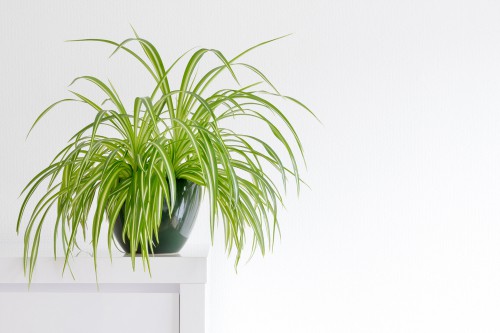
Areca Palm, also known as Dypsis lutescens, is a popular indoor plant among houseplant enthusiasts. This plant is native to Madagascar and is commonly referred to as Golden Cane Palm, Butterfly Palm, or Bamboo Palm. Its popularity stems from its elegant appearance, low maintenance, and air-purifying qualities.
Areca Palm is a fast-growing plant that can reach up to 10 feet in height. Its slender, bamboo-like stems are topped with feathery fronds that give it a tropical look. The plant’s leaves are pinnate, meaning they are arranged like a feather, with multiple leaflets on either side of the stem.
One of the most common problems with Areca Palms is browning of the tips and leaves. This can be caused by a variety of factors, including overwatering, underwatering, insufficient light, over fertilizing, low humidity, and pests. To prevent browning, it is important to maintain the right growing conditions for the plant.
Areca Palms prefer bright, indirect light and thrive in temperatures between 65 and 85 degrees Fahrenheit. They also require high humidity levels, between 50 and 80 percent, which can be achieved by placing a tray of water near the plant or using a humidifier.
When watering Areca Palms, it is important to let the soil dry out slightly between waterings. Overwatering can lead to root rot and browning of the leaves. Fertilizing every two months with a balanced fertilizer can also help keep the plant healthy.
Areca Palm Turning Brown – 5 Common Problems
Areca palms are popular indoor plants known for their lush green foliage and air-purifying properties. However, one common issue that many plant owners face is the browning of the leaves and tips of the plant. Understanding the reasons behind this phenomenon is essential to prevent further damage and maintain the health of the plant.
1. Overwatering or Underwatering
One of the most common reasons for brown tips on Areca palms is overwatering or underwatering. Overwatering can lead to root rot, which in turn causes the leaves to turn brown and wilt.
On the other hand, underwatering can lead to dehydration and cause the tips of the leaves to turn brown. It is essential to strike a balance between the two and ensure that the soil is moist but not waterlogged.
2. Insufficient Light
Areca palms require bright, indirect light to thrive. Insufficient light can cause the leaves to turn brown and wilt. Placing the plant near a window that receives bright, filtered light can help prevent this issue.
3. Low Humidity
Areca palms are native to humid tropical regions and require high humidity levels to grow well. Low humidity levels can cause the leaves to turn brown and dry out. Using a humidifier or placing a tray of water near the plant can help increase humidity levels and prevent this issue.
4. Nutrient Deficiency
Areca palms require regular fertilization to maintain their lush green foliage. A lack of essential nutrients such as nitrogen, phosphorus, and potassium can cause the leaves to turn brown and wilt. Fertilizing the plant every two months with a balanced fertilizer can help prevent this issue.
5. Pest Infestation
Areca palms are also susceptible to pest infestations such as spider mites, mealybugs, and scale insects. These pests can cause the leaves to turn brown and wilt. Regularly inspecting the plant for signs of infestation and treating it with insecticidal soap or neem oil can help prevent this issue.
Watering Issues and Brown Areca Palms
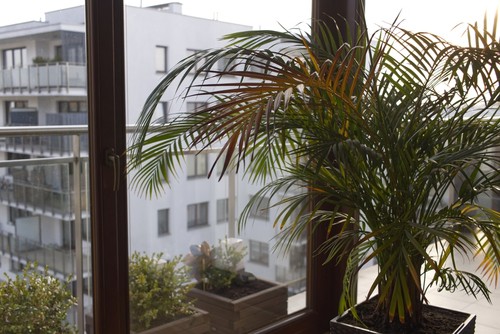
Areca palms are sensitive to their watering schedule, and improper watering is one of the most common reasons for brown tips and leaves.
Overwatering can cause the soil to become waterlogged, leading to root rot and brown leaves. On the other hand, underwatering can cause the leaves to dry out and turn brown. Therefore, it is essential to find a balance between the two.
When watering the plant, it is recommended to use distilled or rainwater instead of tap water, which may contain chlorine or fluoride. If tap water is the only option, it should be left out overnight to allow the chemicals to dissipate.
To check if the plant needs watering, one can use a moisture meter or check the soil’s moisture level by sticking a finger about an inch into the soil. If the soil feels moist, then the plant does not need watering.
Areca palms require consistent hydration, but over-watering should be avoided. The plant should be watered when the top inch of soil feels dry. It is also essential to ensure proper drainage to prevent water from accumulating at the bottom of the pot.
Light and Temperature Factors
Areca palms require bright, indirect sunlight to thrive. Direct sunlight can scorch the leaves, causing them to turn brown. Insufficient light, on the other hand, can cause the tips of the leaves to turn brown and the plant to become leggy.
In their natural habitat, Areca palms grow under the bright filtered sun. Therefore, it is essential to replicate this environment indoors. Placing the plant near a window with filtered sunlight is ideal. Full sun or direct sunlight should be avoided as it can cause the leaves to burn.
Temperature is also an important factor to consider. Areca palms prefer temperatures ranging from 65 to 85 degrees Fahrenheit. Cold drafts can harm the plant and cause the leaves to turn brown. Therefore, it is essential to keep the plant away from air conditioners, air drafts, and windows.
Maintaining the right temperature and humidity levels is crucial for the plant’s health. The ideal humidity level for Areca palms is between 50 and 80 percent. Low humidity can cause the leaves to turn brown, while high humidity can lead to fungal diseases. Therefore, it is essential to keep the plant in a location with adequate humidity levels.
Soil and Nutrition Requirements
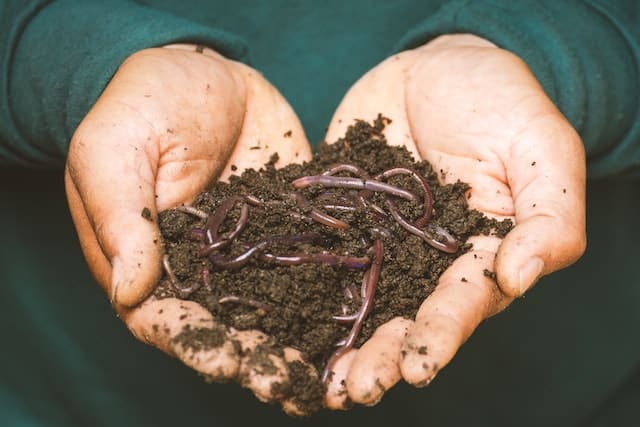
Areca palms require well-draining soil that is slightly acidic with a pH ranging from 6.1 to 6.5. The ideal potting mix for an areca palm contains a mixture of peat-based soil and sand for rich nutrients, aeration, superior drainage, and weight to support the top-heavy plant.
When repotting an areca palm, it is important to ensure that the pot has drainage holes to allow excess water to escape. Compacted roots can cause brown tips on the leaves, so it is recommended to repot the plant every two to three years to prevent this issue.
Over Fertilizing can also cause brown tips on the leaves due to fertilizer burn or fertilizer salts buildup. It is recommended to use a balanced fertilizer with a 3-1-2 or 2-1-2 NPK ratio every two to three months during the growing season (spring and summer) and every three to four months during the dormant season (fall and winter).
A nutrient deficiency, such as boron deficiency, can also cause brown tips on the leaves. To prevent this issue, it is recommended to use a liquid fertilizer that contains micronutrients such as boron, magnesium, and zinc.
In summary, providing an areca palm with well-draining soil, repotting every two to three years, and using a balanced fertilizer with micronutrients can help prevent brown tips on the leaves.
Pests and Diseases
Areca palms are susceptible to various pests and diseases that can cause leaves to turn brown. Identifying the underlying problem is crucial to prevent further damage and keep the plant healthy.
Pests
Common pests that can infest an areca palm include mealybugs, spider mites, and scales. Mealybugs are small, white, and fluffy insects that suck sap from the leaves, causing them to turn brown. Spider mites are tiny, spider-like creatures that also feed on the sap of the leaves. Scales are small, round insects that can be brown or white and leave behind a sticky residue.
To prevent pest infestations, regularly inspect the plant for signs of infestation, such as yellowing leaves, sticky residue, or webs. If pests are present, use insecticidal soap or oil to eliminate them. If the infestation is severe, consider repotting the plant in fresh soil.
Diseases
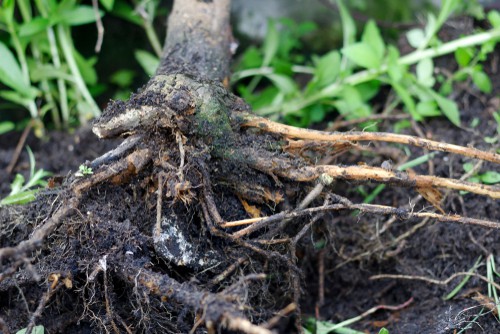
Areca palms can also be susceptible to fungal diseases, such as root rot and pink rot. Root rot is caused by overwatering and poor drainage, leading to the roots becoming waterlogged and rotting. Pink rot is caused by a fungus that thrives in warm and humid conditions, leading to the leaves turning brown and mushy.
To prevent diseases, ensure the plant is not overwatered and has proper drainage. Avoid using chlorinated or fluoridated water, as it can damage the plant and make it more susceptible to diseases. If the plant is infected with a fungal disease, consider repotting it in fresh soil and treating it with a fungicide.
Overall, pests and diseases can cause an areca palm to turn brown. Regular inspection, proper watering, and treatment with insecticides or fungicides can help prevent infestations and keep the plant healthy.
Pruning and Repotting
Areca palms require minimal pruning, but it is still important to trim off any dead or brown leaves to maintain the plant’s health and appearance. Dead or brown leaves can be easily removed by cutting them off at the base of the stem with sharp, clean scissors or pruning shears.
It is best to avoid tearing or ripping the leaves as this can cause further damage to the plant.
If the areca palm has grown too large for its current pot, it may be time to repot it. Repotting should be done every two to three years or when the plant has outgrown its current container. When repotting, choose a pot that is one size larger than the current one and has drainage holes to prevent waterlogging.
Fill the pot with fresh, well-draining potting soil and gently remove the plant from its current container. Loosen any matted roots and place the plant in the new pot, making sure the soil level is at the same height as before. Water the plant thoroughly and place it in a bright, indirect light.
It is important not to overwater the plant after repotting as the roots may still be adjusting to their new environment. Allow the soil to dry out slightly between waterings and avoid fertilizing for the first few weeks after repotting to prevent root burn.
Overall, pruning and repotting are important maintenance tasks for areca palms that can help keep the plant healthy and looking its best. By following these simple steps, anyone can successfully care for an areca palm and enjoy its beauty for years to come.
Additional Care Tips
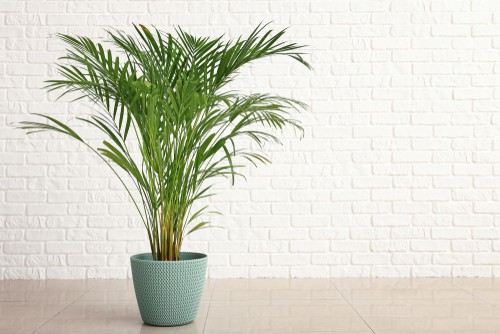
To keep an Areca Palm healthy and prevent it from turning brown, there are a few additional care tips to keep in mind.
1. Humidity
Areca Palms are tropical plants and thrive in high humidity environments. Low humidity levels can cause the leaves to turn brown and dry out. To prevent this, it is recommended to keep the plant in a room with a humidity level between 50 and 80 percent. If the air in the room is dry, you can use a humidifier to increase the humidity levels around the plant.
2. Misting
Misting the leaves of an Areca Palm can help to increase the humidity levels around the plant. This is especially important during the winter months when indoor heating can dry out the air in a room. Misting the leaves once or twice a day can help to prevent the leaves from turning brown and keep the plant healthy.
3. Growth Rate
Areca Palms are fast-growing plants and can quickly outgrow their pots. If the plant is not growing as fast as it should or if the leaves are turning brown, it may be time to repot the plant into a larger container. This will provide the plant with more space to grow and prevent it from becoming root-bound.
4. Stunted Growth
If the growth of an Areca Palm is stunted, it may be due to a lack of nutrients in the soil. Fertilizing the plant every two months can help to provide the plant with the nutrients it needs to grow. It is important to use a fertilizer that is specifically designed for palm trees to prevent over-fertilization.
Frequently Asked Questions
How do I prevent my Areca palm leaves from turning brown?
To prevent your Areca palm leaves from turning brown, make sure to water it properly and maintain the right humidity level. Overwatering or underwatering can both cause brown tips and leaves. Areca palms prefer moist but not waterlogged soil. You should also mist the leaves regularly to maintain a high humidity level.
What are the signs of overwatering an Areca palm?
The signs of overwatering an Areca palm include yellow leaves, root rot, and a foul smell coming from the soil. If you notice any of these signs, reduce the frequency of watering and make sure the soil is well-draining.
What is the best fertilizer for Areca palms?
Areca palms require a balanced fertilizer with equal parts nitrogen, phosphorus, and potassium. A slow-release fertilizer is best, applied every three months during the growing season.
What are the light requirements for Areca palms?
Areca palms prefer bright, filtered light. Direct sunlight can scorch the leaves, while too little light can cause the plant to grow slowly and develop brown tips.
How often should I water my Areca palm?
Areca palms should be watered when the top inch of soil is dry. This can vary depending on the temperature, humidity, and light levels in your home. In general, you should water your Areca palm every 7-10 days.
How do I treat fungus on my Areca palm?
To treat fungus on your Areca palm, remove any affected leaves and reduce the frequency of watering. You can also apply a fungicide to the soil and leaves. Make sure to follow the instructions carefully and avoid using too much, as this can damage the plant.

Hey, I’m Lisa and I’ve been an avid gardener for over 30 years. I love writing, talking and living in the garden! Feel free to connect with me on my socials below


